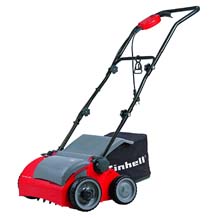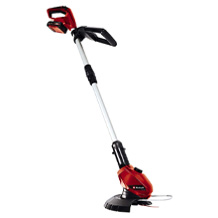Lawn mower purchasing advice: how to choose the right product
- What you need to know
- For larger lawns of 4300 square feet (400m²) or more and longer grass, petrol/gas lawn mowers with their powerful engine are the clear recommendation.
- Electric lawn mowers are quieter and more environmentally friendly, but have a weaker engine and a limited range of movement. They are well suited for smaller to medium-sized areas.
- The most important criteria for purchasing a lawn mower are the cutting width, the cutting height, the engine power and the size of the rear bag.
- A useful additional function is a dethatcher. This aerates the lawn and allows it to grow over new areas.
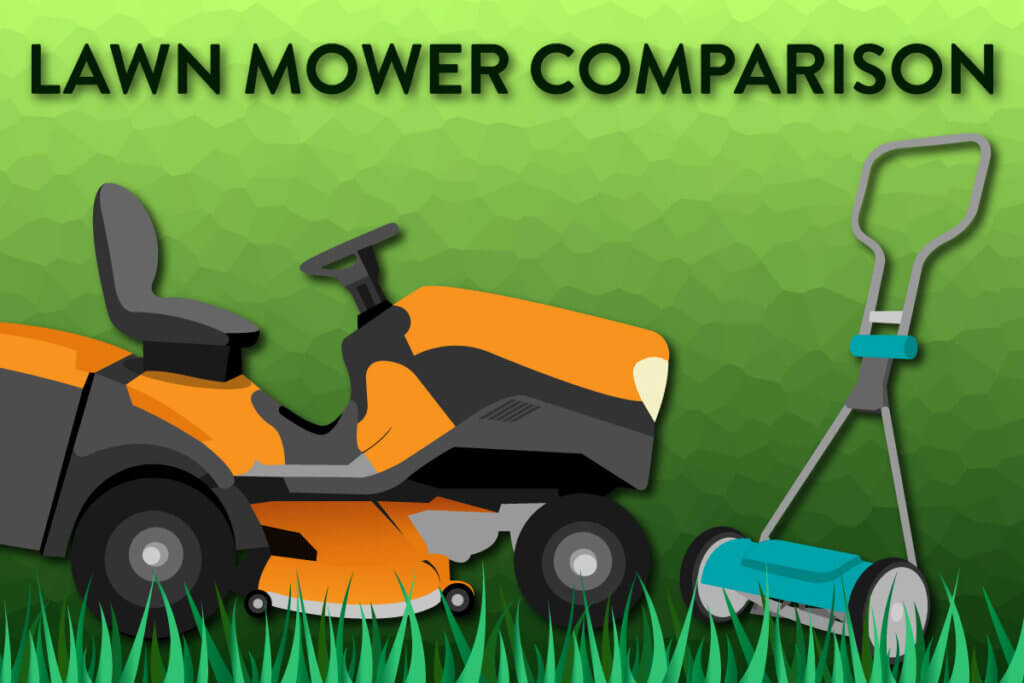
Lawn care is a must
In spring, when the first rays of sun drive away the gloomy winter mood and lure us outdoors, the gardening season begins. By then at the latest, your own garden should look attractive and well-maintained in order to live up to its role as a place of retreat and an oasis of relaxation. The most important thing here is a well-groomed lawn.
Barefoot running, football, and garden parties
A well-maintained lawn provides a foundation for many outdoor activities. A rampant meadow has its charm, but it is not suitable for playing football and running around. Walking barefoot is also much more pleasant on a well-kept lawn.
A well-groomed, smooth lawn is also advantageous for setting up garden furniture. Garden tables, chairs, and loungers are more stable on it than on a wildly growing lawn. And who wants to constantly make sure that the table doesn’t wobble and the coffee cup doesn’t tip over while having a relaxing sip in the garden? The same applies, of course, to the grill at a garden party. At the same time, a lush green lawn creates a particularly beautiful atmosphere. And standing on a soft grass carpet is much more pleasant than on a concrete or paved terrace.
Running barefoot is healthy
Shoes support our feet when running, but they also constrict them and can lead to an uneven load. Therefore, we should give our feet some space now and then and run barefoot. This also builds up foot muscles, which not only promotes leg health, but also gives the back more support and has a very positive effect on the entire posture. In addition, walking barefoot strengthens the natural immune system. So we should leave our shoes off more often.
Assistance for lawn care
Hardly anyone has the time or desire to meticulously trim their lawn to the right length with nail scissors. Sickles and scythes require a certain amount of skill and are rather unsuitable for larger lawns. Thus, you need a suitable lawn mower to take care of your lawn.
If you are looking for a suitable lawn mower or are dissatisfied with your existing one, our purchase advice will help you find a suitable model. In our comparison of the best lawn mowers, we first present the most common types of lawn mowers with their respective advantages and disadvantages, explain the most important purchase criteria that you should consider and go into detail about special lawn mowers. You will also find useful tips for a well-groomed lawn.
Petrol or electricity?
Basically, the common lawn mowers on the market can be divided into two types according to their mode of operation: petrol and electric lawn mowers. We explain below the advantages and disadvantages of each and for which purposes they are suitable.
Petrol/gas lawn mowers: ideal for large lawns
Petrol or gas lawn mowers are characterised by their powerful engine. Despite all the efforts to make electric motors acceptable, they have not yet been able to keep up with combustion engines in terms of performance. This makes fuel-powered lawn mowers ideal for mowing large lawns, as larger cutting widths are possible with a more powerful engine. In return, they are usually equipped with larger rear bags. Even somewhat taller and damp grass, where electric lawn mowers with weaker engines often reach their limits, doesn’t usually cause problems for petrol/gas models.
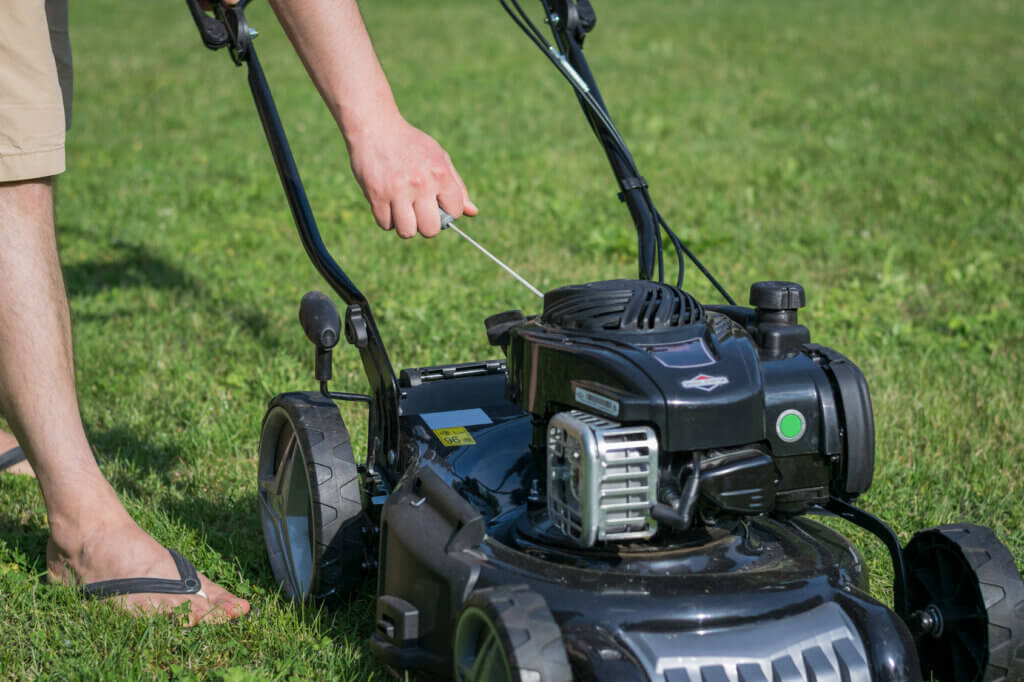
Due to the fuel-based operation, no power connection is necessary, which makes these models very flexible. Users can move freely around the garden with the device without having to worry about a power cable or battery life. They usually start the engine with a quick pull by hand, which requires much less effort with modern lawn mowers than with earlier ones. Alternatively, there are petrol/gas lawn mowers with a convenient electric starter or start button.
What petrol/gas does the lawn mower need?
Which petrol/gas you should use for your lawn mower depends primarily on the choice of engine. Two-stroke engines, which are now considered obsolete, require a mixture of oil and petrol/gas. In contrast, modern four-stroke engines run on unleaded petrol/gas. Premium 93 octane fuel is suitable for many new cars, but not necessarily for lawn mowers. To make sure you choose the right fuel, it is advisable to take a look at the owner’s manual.
Wheel drive for more comfort
Compared to electric models, fuel-powered lawn mowers are usually more robustly built. Among other things, their engine is protected by an aluminum housing. The robust construction promises a long service life, but also means a comparatively high weight of about 55 to 77 pounds (25 to 35kg). Some manufacturers remedy this problem by equipping their lawn mowers with a wheel drive, which makes working with the heavy equipment much easier. The self-propelled drive has an average speed of about 2 mph (3.5 km/h) and can be switched off at any time. Depending on the model, the drive speed can also be regulated. A self-propelled lawn mower is particularly recommended for users who want to mow uneven areas and hills with their lawn mower.
The disadvantages of fuel-powered lawn mowers
However, petrol/gas lawn mowers have other disadvantages compared to electric versions besides their higher weight. For example, although the fuel engine produces more power, it is also much louder than an electric engine and produces exhaust fumes that are harmful to people and the environment. In addition, these models have a more complex design than the electric version, which makes maintenance more complex and necessary more often. This is because fuel engines contain more sensitive parts such as the fuel line, oil filter, and spark plugs, which usually require a specialist to maintain.
Another disadvantage: the price. On the one hand, fuel-powered lawn mowers are considerably more expensive to buy than the electric version, costing between $200 and $600. On the other hand, there are regular costs for petrol/gas.
Advantages
- Suitable for large lawns
- High flexibility
- No power cord necessary
- Powerful motor
- Robust construction
- Often with wheel drive
Disadvantages
- High noise level
- Environmentally harmful exhaust fumes
- More care and maintenance
- Expensive (purchase + fuel)
- High weight
Electric lawn mower: quiet and emission-free
Instead of fuel, electric lawn mowers are powered by electricity. This works either by cable or battery. Basically, electric lawn mowers have the great advantage over fuel-based models that they are much quieter and don’t emit harmful exhaust fumes. In addition, they usually weigh less, which means that they can be pushed over the lawn with less effort, so that even angled lawns are no problem. The maintenance of electric lawn mowers is also less complicated and, unlike fuel lawn mowers, they usually don’t require the services of a specialist.
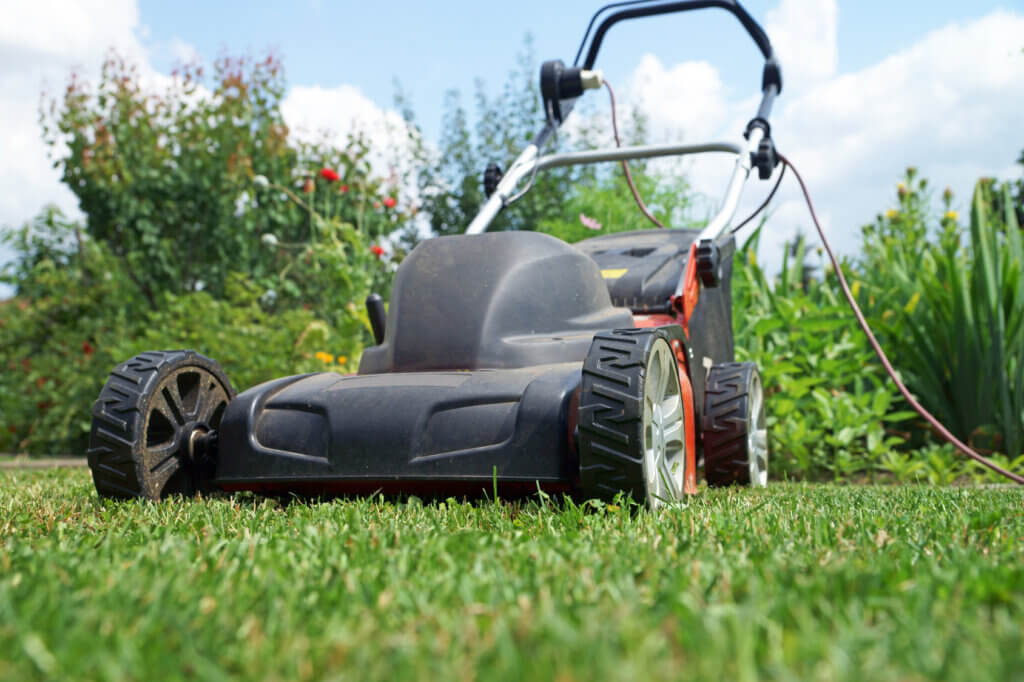
With power cable or battery?
Battery-powered lawn mowers have the advantage that they can be pushed over the lawn more comfortably and flexibly because there is no power cable. In addition, there is no risk of accidentally mowing over the power cable and damaging it. Disadvantages compared to the corded version are the higher weight due to the battery and the usually somewhat higher purchase price.
The price difference between corded and battery-powered lawn mowers
Corded lawn mowers are considerably cheaper than fuel-powered lawn mowers, with prices starting at $60. Battery-powered models are almost on a par with fuel-powered lawn mowers, with purchase prices between $130 and $600.
The disadvantages of electric lawn mowers
It goes without saying that corded lawn mowers have a limited range of movement. But even battery-powered mowers are not quite as free in their range as fuel-powered ones. Because the battery doesn’t last forever, of course. Depending on the model and engine power, a fully charged battery can be empty after just 15 minutes. The comparatively weak engine is also a limitation. Especially on wet and high grass, electric models are inferior to fuel-powered models. Both corded and battery-powered lawn mowers are therefore better suited for smaller lawns up to a maximum of 4300 square feet (400 m²), which is a little smaller than a basketball court (4700 ft²/436 m²).
Advantages
- Quiet
- Environmentally friendly
- Less maintenance
- Cost-effective corded models
- Low weight
Disadvanatges
- Weaker motor
- Limited range of motion
- Battery-powered models expensive
- Not suitable for large areas
Which lawn mower is suitable for whom?
Fuel-powered lawn mowers are powerful and flexible, but loud, polluting, and expensive. They are mainly suitable for consumers who want to use them to mow larger lawns, for example 4300 square feet (400 m²) or more, and also sometimes taller grass.
For smaller areas, we recommend an electric lawn mower. This variant is much quieter and more environmentally friendly. With a corded version, consumers even save a lot of money compared to fuel-powered models. It is suitable for users who have a good power connection in their garden, want to spend little money and are not bothered by the power cable when mowing. If you want to be a little more flexible and spend a little money on it, a cordless lawn mower is the right choice.
The most important purchase criteria
If you think you can simply cut any lawn short in the same way, you are mistaken. Grasses and lawn types have their own preferences, and it shows when they receive the right care from their owner. When it comes to cutting width, too, it is not a case of “the more the merrier”. Instead, lawn lovers should consider a few decisive criteria before purchasing in order to find the model that suits their needs and their greenery. In the following, we provide you with five important decision-making aids.
The cutting height of the lawn
For a well-maintained lawn, it is important to determine the optimum cutting height. If you cut too much, the grass cannot grow strongly. If, on the other hand, you cut too little, you will soon have to reach for the lawn mower again. Therefore, when choosing your new lawn mower, you should pay attention to which cutting heights it supports.
Which lawn should be cut at what height?
The right cutting height depends largely on the type of lawn. For normal lawns it is roughly between 1.4 and 2 inches (3.5 and 5cm). For so-called shade lawns, it is better to leave 0.5 to 1 inch more so that the blades of grass can absorb sufficient sunlight. For ornamental lawns, on the other hand, the optimum cutting height is between 0.5 to 1 inch (1.5 and 2.5cm).
Minimum and maximum cutting height
Manufacturers usually specify values for the minimum and maximum cutting height in their product descriptions.The minimum cutting height is the lowest possible cutting height that users can set on the lawn mower. It is about one inch (3 cm) for most fuel-powered and electric lawn mowers on the market. For lower cutting heights, a hand-operated cylinder mower is recommended.
The maximum cutting height is the highest grass height that the lawn mower can cut. If you want to mow your lawn less frequently, you should choose a lawn mower with a higher maximum cutting height. If you cut too much at once, there is a risk that the grass will turn brown.
Depending on the model, you can set the appropriate cutting height on your lawn mower either simply in inches/centimetres or in levels. If the latter is the case, you can usually read in the operating instructions which level corresponds to the desired cutting height. Many models have a convenient central cutting height adjustment. On other machines, however, you have to adjust the cutting height separately on two or four wheels, which is a little more complicated.
What does mulching mean?
The term mulching refers to the extensive covering of the soil with unrotted organic material. Shredded tree bark, so-called bark chips, is often used for this purpose. But fallen leaves or freshly cut grass can also serve as mulch. Mulching adds nutrients to the soil and keeps it fertile in the long term.
The cutting width
Almost more important than the cutting height is the cutting width of a lawn mower. It affects how quickly users can mow a lawn with it. Mowers with a wide cutting width can cut the same area of lawn faster than those with a narrower cutting width.
One could conclude from this that it is always worth choosing a model with the widest possible cutting width. However, such lawn mowers are somewhat more expensive. Also, they are less manoeuvrable and heavier than lawn mowers with a narrower cutting width and require more space. Mowing small, winding gardens is therefore rather difficult with such clunky lawn mowers. When choosing the cutting width, you should therefore roughly consider the lawn area to be mown. The following list provides a guide:
- Up to 2700 square feet (250 m²) lawn area: 12 to 16 inches (30 to 40cm) cutting width
- 2700 to 5400 square feet (250 to 500 m²) lawn area: 16 to 20 inches (40 to 50cm) cutting width
- 5400 to 10,800 square feet (500 to 1000 m²) lawn area: 20 to 22 inches (50 to 55cm) cutting width
Another decisive criterion for selecting the appropriate cutting width is narrow areas of the lawn, such as paved paths, tree trunks, or bushes.
Engine power
The engine power of the lawn mower determines, among other things, how well the machine copes with dense and longer lawns. In addition, more powerful machines are better suited for larger areas. For small front gardens, for example, a lawn mower with a low engine power of 800W or a little more is usually quite sufficient.
Most commercially available electric lawn mowers have an engine power of between 1300 and 1700W. This gives them enough power for medium-sized gardens (from about 2150 to 4300 ft²/200 to 400 m²). Particularly powerful electric lawn mowers work with 2000W or more. However, users should note that such models also consume correspondingly more electricity.
Fuel-powered engines are more powerful than electric engines. Depending on the model, they produce between 1500 and 3500W (around two to five hp). Powerful petrol/gas lawn mowers easily cut dense, tall, and wet grass and are suitable for large gardens up to about 15,000 square meters (1400 m²). Especially in hilly gardens, however, you should choose a device with wheel drive so that pushing the mower is not too hard.
The weight
How comfortable a lawn mower is to operate depends largely on its weight. Heavier machines are usually more difficult to push across the lawn. Especially for people with back problems or of an advanced age, pushing a lawn mower that is too heavy can be uncomfortable. Typically, electric lawn mowers are noticeably lighter than fuel-powered lawn mowers. Roughly speaking, the devices can be divided into three different weight classes.
| Weight class | Weight range | Lawn mower type | Effort |
| Light | Up to 33 lb/15kg | Manual lawn mower | Low |
| Medium Heavy | 33 lb to 55 lb/15 kg to 25kg | Electric lawn mower | Average |
| Heavy | Over 55 lb/25kg | Fuel-powered lawn mower | High |
The noise level
The noise emission of a lawn mower is decisive for when you may use the device. Fuel-powered lawn mowers in particular can be quite loud. Under certain circumstances, mowing the lawn may even be considered disturbing the peace and can be punished with a fine.
You should always check your local ordinances and find out what kind of noises are considered disturbing and at what times they’re allowed. This may vary from one municipality or county to another, but is usually somewhere between 7 am to 9 pm and may be interrupted by legal rest hour. In countries like Germany, all of Sunday is off limits for mowing your lawn and other excessive noises.
If you want to be a little more flexible and use your lawn mower around lunchtime, for example, you should opt for a quieter electric model so as not to risk a fine and offend the neighbors.
Helpful equipment
Many lawn mower manufacturers equip their models with various additional features and functions that mainly increase ease of use or serve to care for the lawn. We present some of the most common ones below.
Wheel drive
In lawn mowers with wheel drive, the engine not only drives the blade, but also the rear wheels at the same time. This means that the lawn mower moves over the ground by itself and the user only has to guide it. Especially with heavy equipment and sloping terrain, a lawn mower with a wheel drive is very advantageous and increases the ease of use enormously.
Electric start
With fuel-powered lawn mowers, an electric start function makes the rather tedious task of starting the engine easier. Instead of getting the lawn mower running with a powerful cable, users only have to press a button and the lawn mower starts.
Rear bag
Most commercially available electric and fuel-powered lawn mowers are equipped with a rear bag. This is where they collect the cut grass so that users don’t have to rake it up after mowing. The larger the bag, the less frequently it has to be emptied. Accordingly, a larger bag is recommended for larger areas.
High Wheel
So-called high-wheels are extra-large wheels. Lawn mowers with such XXL wheels can be pushed more comfortably over bumps and mossy lawns without getting stuck.
Knife coupling
Some petrol lawn mowers are equipped with a blade brake clutch (BBC), also called a blade stop. This function ensures that the blade of the lawn mower stops as soon as the user releases the safety bar. However, the engine continues to run. The blade brake clutch thus makes it possible, for example, to empty the rear bag without having to restart the engine afterwards.
Mulching function
Lawn mowers with a mulching function make it possible to close the access to the rear bag, which means that the grass is cut several times and thus finer, and is then distributed on the lawn as fine grass shreds. Special mulching mowers don’t even have a bag. If you mulch regularly, you don’t usually need to fertilise your lawn.
Side discharge
An alternative to lawn mowers with a rear bag and mulching mowers are models with side discharge. With the latter, the cut grass is not directed to the rear and collected in a bag, but is placed on its side next to the lawn mower and then collected by hand.
Dethatcher
A dethatcher or lawn scarifier involves scarifying the turf with a special cutting tool. This removes old cuttings and moss and promotes aeration of the soil. Some lawn mower models are available with a dethatcher attachment. This saves consumers having to purchase an additional gardening tool. Alternatively, some manufacturers offer dethatcher attachments for various lawn mowers.
Special types of lawn mowers
In addition to the classic push lawn mowers, which are available with either fuel-powered or electric engines, the market also offers special variants. What distinguishes them and for which consumer groups and purposes they are worth purchasing is explained below.
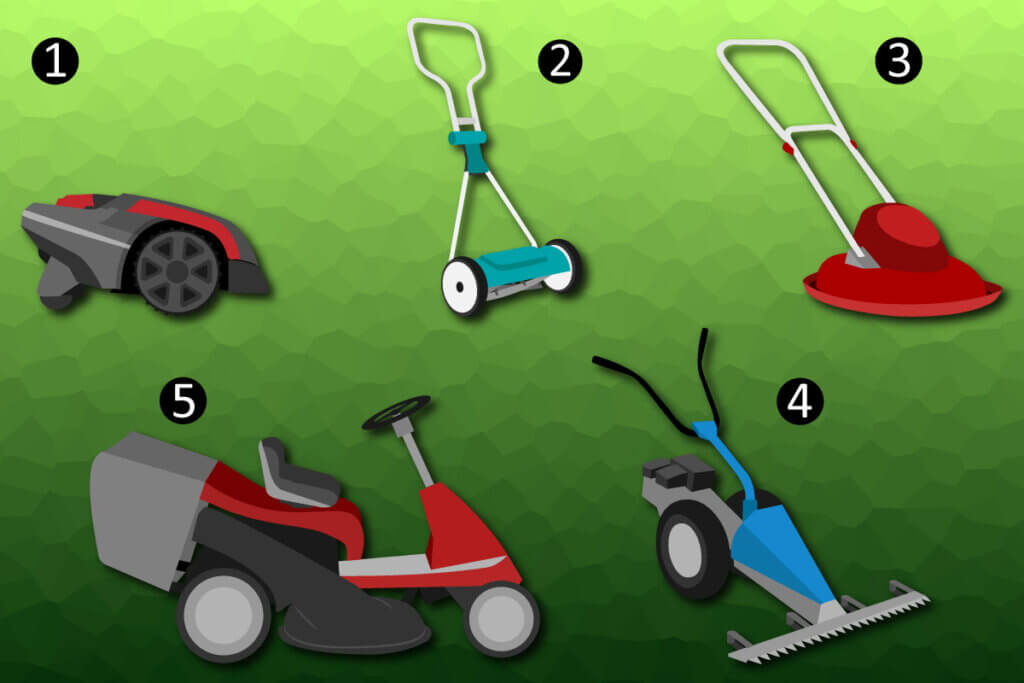
Robotic mower: power and time saving
Thanks to clever technology in miniature format, it is now becoming easier and easier for private consumers to have unpleasant chores done by devices developed for this purpose. Robotic vacuum cleaners and mops show the way, and these little helpers are now also available for mowing the lawn. Robotic lawn mowers cut the lawn independently and quietly, but users must define the area to be mowed with a boundary wire before the first use. Modern robotic lawn mowers can also mow larger areas without any problems. Depending on the model, they are suitable for lawns of 2000 to 8500 square feet (200 to 800 m²). However, robotic mowers are still comparatively expensive. You should budget at least $500 for the purchase. In addition, the self-propelled lawn mowers are unsuitable for rough terrain and steeper slopes.
Cylinder mower: gentle on the lawn and the environment
The so-called cylinder mower is in a way the original form of a lawn mower. The typical cylinder mower is operated by hand and is therefore particularly environmentally friendly. They also mow the lawn very quietly, gently, and precisely. A rear bag is usually not available; cylinder mowers are primarily used for mulching. Because of the precise cut, cylinder mowers are used on football pitches and golf courses, for example, but usually as an electrically powered version. For regular consumers, manually operated cylinder mowers are mainly suitable for very small gardens and environmentally conscious consumers who like to cut their lawns very precisely.
Hover mower: a floating device for steep slopes
Another special type of lawn mower is the futuristic-looking hover mower. Unlike the other types of lawn mowers, they don’t move on wheels. Instead, there is a fan on their underside above the cutting blade, which ensures that they float over the lawn on a cushion of air. To make this work, hover mowers use particularly lightweight components and weigh only about 11 pounds (5 kg). Hover mowers are usually powered by an electric motor. In addition, most manufacturers do without rear bags to keep the weight as low as possible. Hover mowers are particularly suitable for smaller lawns with sloping terrain; slopes of up to 60 degrees are no obstacle for the floating mowers. In addition, they are particularly easy to push and are therefore easy on the muscles and joints when working in the garden.
Sickle bar mower: ideal for uneven terrain
Sickle bar mowers are characterized by the fact that the cutting tool is attached to the front and in the form of a long bar, which makes them resemble a combine harvester. These special mowers are available in both hand-operated and motorized versions. The effective blade system located on the bar easily cuts tall grass, crops, and small bushes. In addition, the bar mower stands out because it only runs on two wheels. This makes it particularly manoeuvrable and ideal for uneven terrain and hard-to-reach areas. It is mainly used in agriculture, for example to collect animal feed. Motorized machines are also well suited for mowing hillsides.
Riding lawn mower: mowing large meadows comfortably
Riding lawn mowers are considered the kings of lawn mowers. The user can also feel like a king or queen when they relax on their mini tractors and drive across the lawn while it trims it to the right length. The big disadvantage of lawn tractors: their purchase price, which starts at around $1200. In addition, they are naturally much larger than classic fuel-powered or electric lawn mowers and require sufficient storage space. They are recommended for large lawns of 21,500 square feet (2,000 m²) or more. Smaller, especially winding gardens are less easy to mow with them.
Tips for a well-kept lawn
The right lawn mower is the first step to an optimally maintained lawn. If you then consider the following tips when mowing, nothing can really go wrong.
- Prepare the lawn
Before you mow your lawn for the first time in spring, it is essential to remove all autumn and winter debris such as fallen branches and leaves so that nothing but grass gets under the blades of the lawn mower. Therefore, before mowing, you should also make sure that no other objects such as stones or toys are lying around on the lawn. You should also remove molehills, as the piled up soil will otherwise cause the blades to become blunt. - It is better to mow more often
In the first months of spring, grass grows particularly fast, up to an inch (2.5cm) per week depending on the type of grass. Especially then, you should cut your lawn at least once a week so that the lawn looks well-kept and dense. - Fertilize or mulch regularly
While regular mowing is important for a well-kept lawn, it also costs the grass nutrients. Therefore, you should fertilize your lawn about once a month to provide it with nutrients again. Alternatively, you can mulch regularly instead of collecting the grass. Then the clippings will rot on the turf, returning the lost nutrients to the lawn. The mulch layer also prevents weeds from growing. On hot and dry days, it ensures that the freshly cut lawn doesn’t dry out.
- Follow the one-third rule
If you are unsure how often you should mow your lawn, you can use the so-called one-third rule as a guide. It states that you should only ever cut one-third of the total grass length.
An example
Let’s assume we are dealing with normal utility lawns and we have decided on an optimum cutting height of 2 inches:2/3 = 2 inches
1/3 = 1 inch
3/3 = 2 inches + 1 inch = 3 inches
Accordingly, we always shorten our lawn by 1 inch when it has reached a height of about 3 inches.
- Do not step on the still unmown area
While mowing the lawn, you should take care to stay on the already mown track so as not to flatten the still unmown grass. Otherwise, the grass may not be cut at a uniform height, as the flattened blades won’t have had the time to straighten up again. - Ensure sufficient moisture
For your lawn to grow and thrive in lush green, it needs sufficient moisture. If there is no rain for a longer period of time and the humidity is low, you should water your lawn. As a rule of thumb, if the lawn shows a bluish to greyish tinge and the older blades begin to wilt, watering is necessary. Extensive sprinkling is particularly effective. For freshly laid lawns, it is best to turn on the sprinkler even daily so that the seeds can germinate well and form roots. Ideally, you should sprinkle your lawn in the early morning hours when the soil has cooled down a little overnight. Then it can absorb the water better. If the sun is shining strongly on the lawn, it is better to leave the sprinkler switched off, otherwise there is a risk of grass blades being burnt by unfavorably reflecting water droplets.
- Scarify twice a year
Scarify the soil with a dethatcher. This removes dead roots and weeds and ensures that the grass roots are aerated and can grow optimally. For sufficient aeration of the grass roots, it is recommended to use the dethatcher twice a year: once in spring and once in autumn. For young lawns less than three years old, however, you should refrain from scarifying so as not to unintentionally pull the still fine, weakly anchored roots out of the soil. - Resharpen the blades for a clean cut
For the lawn mower to cut the grass cleanly, it needs very sharp blades. At the latest when you notice frayed blades of grass after mowing, you should take your lawn mower to the specialist shop for resharpening. This is usually necessary once a year.
Popular lawn mower brands
Hecht | Bosch | Gardena | Husqvarna | Sabo | Viking | Fluxtec | Horcura | Al-ko
Image 1: © FinalCheck | Image 2: © Eduard / stock.adobe.com | Image 3: © PhotographyByMK / stock.adobe.com | Images 4: © FinalCheck

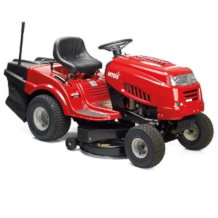
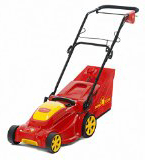

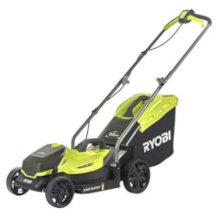
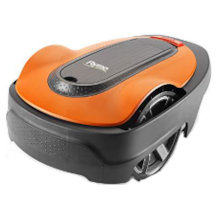
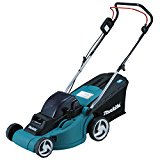
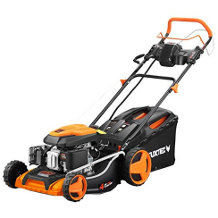









 1,293 reviews
1,293 reviews
